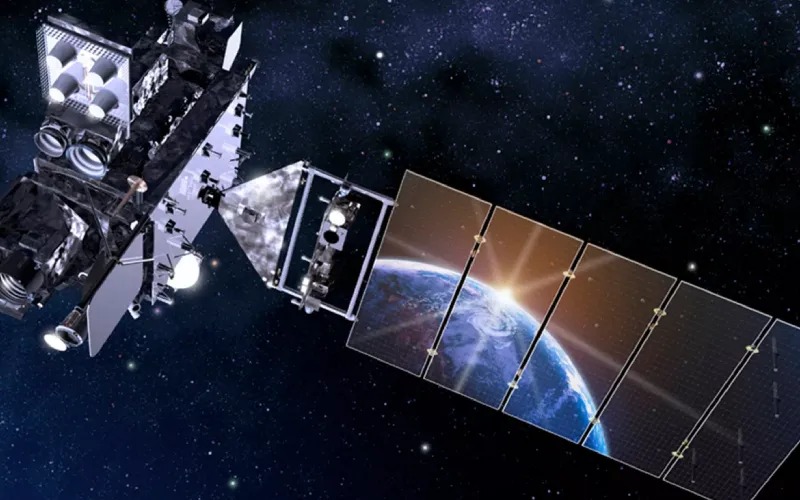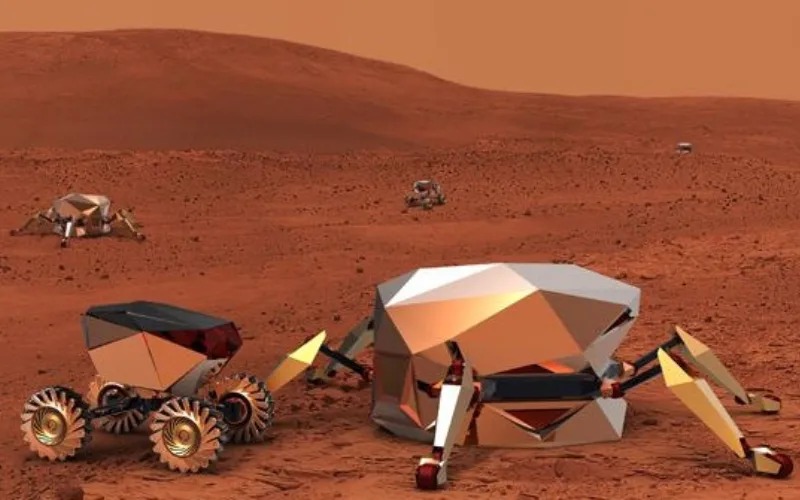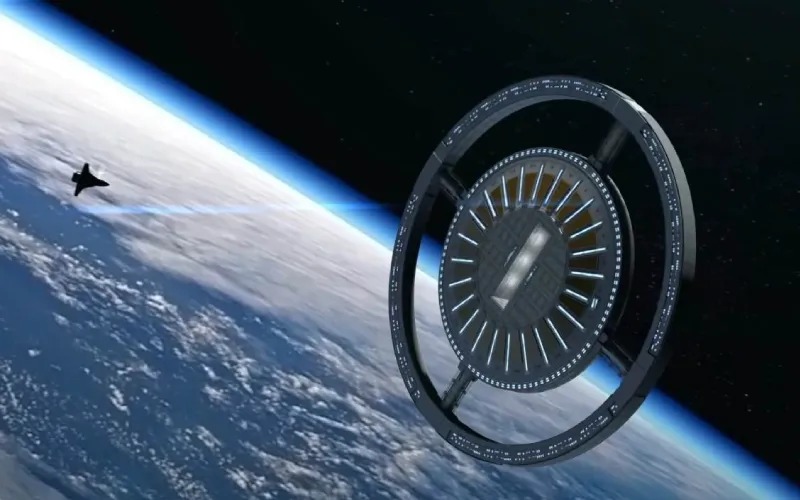
Course Overview
This course aims to provide a comprehensive understanding of satellites, their types, functions, and applications. It covers the fundamental principles of satellite technology, their historical development, and their significance in modern life. In addition to the core topics, the course also includes lectures on satellite design and manufacturing, satellite testing and ground control, data processing and analysis, satellite security and cybersecurity, and new and emerging satellite applications. The course also incorporates hands-on activities, such as simulating satellite orbits, analyzing satellite imagery, designing and building a model satellite, and communicating with a real satellite.
Target Audience
This course is suitable for students, professionals, and anyone interested in learning more about satellites. No prior knowledge of satellite technology is required.
Course Outline
Module 1: Introduction to Satellites
- What are satellites?
- Types of satellites
- Satellite functions
- Satellite applications
- Historical development of satellites
Module 2: Orbital Mechanics
- Kepler's Laws of Planetary Motion
- Newton's Laws of Motion
- Satellite orbits
- Orbital parameters
Module 3: Satellite Subsystems
- Power systems
- Communication systems
- Control systems
- Payloads
Module 4: Launching and Deployment
- Launch vehicles
- Deployment and separation
Module 5: Satellite Applications
- Earth observation
- Communication satellites
- Navigation satellites
- Scientific and research satellites
Module 6: Satellite Challenges and Future Trends
- Space debris and collision avoidance
- Satellite constellations
- Emerging technologies
- Future prospects and space exploration
Module 7: Regulatory and Ethical Considerations
- International Space Law
- Spectrum allocation
- Space sustainability and ethics
Module 8: Case Studies
- Notable satellite missions
- Satellite failures and lessons learned
Module 9: Hands-On Activities
- Simulating satellite orbits
- Analyzing satellite imagery
- Designing and building a model satellite
- Communicating with a real satellite
Module 10: Final Project
- Students can choose a satellite-related project or topic to research and present.
Assessment Methods
- Quizzes and exams after each module
- Homework assignments
- Group discussions and forums
- Final project presentation
Recommended Resources
- Textbooks:
- "Satellite Technology" by Anil K. Maini and Varsha Agrawal
- "Fundamentals of Satellite Engineering" by Andrew J. Butrica
- "Satellite Communication Systems" by Bruce R. Elbert
- Scientific journals:
- IEEE Transactions on Aerospace and Electronic Systems
- Journal of Spacecraft and Rockets
- Acta Astronautica
- Online databases:
- NASA Technical Reports Server
- European Space Agency (ESA) Publications
- American Institute of Aeronautics and Astronautics (AIAA) Technical Papers
- Satellite industry publications:
- SpaceNews
- Via Satellite
- Satellite Markets and Research
- Guest lectures from satellite industry experts
- Teacher: iMaven Astronomy

This course provides a comprehensive understanding of rovers, their design, operation, and their crucial role in space exploration. Students will gain a strong foundation in rover technology and exploration missions through lectures, assignments, and a final project. The course is ideal for students, space enthusiasts, and professionals who want to learn more about rovers and their impact on space exploration.
Learning Objectives
Upon completion of this course, students will be able to:
- Define rovers and classify them into different types
- Describe the historical development of rovers and their importance in space exploration
- Explain the need for robotic exploration and the benefits and challenges of rover missions
- Discuss the basics of remote sensing and data collection
- Identify and describe the key components of rover design and engineering, including mobility systems, power systems, communication systems, and instrumentation
- Explain the mission planning and operations process for rovers
- Compare and contrast different types of planetary and lunar rovers
- Discuss the challenges and solutions associated with rover missions in extreme environments, with communication delays, and with potential software and hardware failures
- Describe future trends in rover technology, such as sample return missions, miniaturized and swarming rovers, and human-rover collaboration
- Discuss the ethical and legal aspects of robotic exploration
- Analyze notable rover missions in depth and identify the challenges and innovations that were addressed
Module 1: Introduction to Rovers
- What Are Rovers?
- Historical Development
- Importance of Rovers in Space Exploration
- The Need for Robotic Exploration
- Benefits and Challenges
- Remote Sensing and Data Collection
- Mobility Systems
- Power Systems
- Communication Systems
- Instrumentation
- Rover Mission Lifecycle
- Surface Operations
- Autonomous Navigation
- Mars Rovers
- Lunar Rovers
- Other Planetary Rovers
- Extreme Environments
- Communication Delays
- Software and Hardware Failures
- Sample Return Missions
- Miniaturized and Swarming Rovers
- Human-Rover Collaboration
- Prospects for Rover Exploration on Other Bodies
- Planetary Protection
- International Space Law
- Ethical Considerations
- In-Depth Analysis of Notable Rover Missions
- Rover Challenges and Innovations
Quizzes and exams after each module
Homework assignments
Group discussions and forums
Final project presentation
Recommended Resources
Textbooks and academic papers
Space agency reports and mission documentation
Online resources and databases
Guest lectures from experts in rover technology and space exploration
- Teacher: iMaven Astronomy

Course Overview
This in-depth course provides a comprehensive exploration of space stations, covering their historical evolution, intricate design principles, multifaceted missions, international collaboration, operational intricacies, and emerging trends. Students will gain a solid foundation in space station technology and their pivotal role in human space exploration through lectures, assignments, and a final project. The course is ideal for aspiring astronauts, space enthusiasts, and students alike.
Learning Objectives
Upon completion of this course, students will be able to:
- Define space stations and explain their significance
- Trace the historical development of space stations from Salyut to the International Space Station (ISS)
- Discuss the cosmic significance of space stations as stepping stones for space exploration
- Compare and contrast manned and unmanned space stations
- Identify and describe the multifaceted missions of space stations, including research, habitation, and technological development
- Explain the importance of global collaboration in space station projects
- Describe the key design and architectural features of space stations, including human habitation and life support systems, power generation and management systems, communication and data systems, and structural components and robotic elements
- Discuss the intricacies of space station operations, including crew selection, training, and life in space, routine operations and maintenance, scientific experiments and research, and resupply missions and cargo management
- Provide detailed insights into the history, structure, functions, and international contributions of the ISS
- Overview other collaborative space stations, such as Mir, Tiangong, and future projects
- Address the health and safety considerations associated with long-duration space missions
- Discuss strategies for safeguarding space stations from orbital debris
- Examine emerging trends in space station technology, such as lunar and deep-space stations, commercial ventures, and new concepts
- Explore the international space law and governance framework governing space activities, including space stations
- Examine planetary protection, sustainability, and ethical considerations in space station operations
- Analyze notable space station missions in depth and identify the challenges encountered and innovative solutions developed
- Select specific space station missions or conceptualize their own and present their projects effectively
Course Outline
Module 1: Introduction to Space Stations
- Understanding Space Stations
- A Historical Overview
- The Cosmic Significance
Module 2: Types and Purpose of Space Stations
Manned and Unmanned Stations
Multifaceted Missions
Global Collaboration
Module 3: Design and Architecture of Space Stations
- Human Habitation and Life Support
- Power Generation and Management
- Communication and Data Systems
- Structural Components and Robotic Elements
Module 4: Space Station Operations
- Crew Selection, Training, and Life in Space
- Routine Operations and Maintenance
- Scientific Experiments and Research
- Resupply Missions and Cargo Management
Module 5: International Space Stations
- The International Space Station (ISS)
- Beyond the ISS
Module 6: Challenges and Future Trends
- Health and Safety Considerations
- Space Debris Management and Collision Avoidance
- Space Station Innovations and Future Concepts
Module 7: Regulatory and Ethical Considerations
- International Space Law and Space Governance
- Ethical and Environmental Dimensions
Module 8: Case Studies
In-Depth Analysis of Notable Space Station Missions
Problem-Solving in Space Station Operations
Module 9: Final Project
Student Project Presentations
Assessment Methods
- Module-specific quizzes and exams
- Engaging homework assignments
- Collaborative group discussions and forums
- Final project presentation and evaluation
Recommended Resources
Comprehensive textbooks and academic papers
Space agency reports and mission documentation
Online databases and space station-related resources
Guest lectures by renowned experts in space station technology and mission operations
Additional Considerations
Hands-on activities: Hands-on activities can help students to better understand space station design, operation, and applications. You could include activities such as building a model space station, simulating a space station mission, or analyzing real space station data.
Emerging technologies: Space station technology is constantly evolving, and new technologies are being developed all the time. You could include a module on emerging technologies to expose students to the latest trends in the field.
Ethical implications: Space stations raise a number of ethical questions, such as the use of public resources for space exploration and the impact of space activities on the environment.
- Teacher: iMaven Astronomy